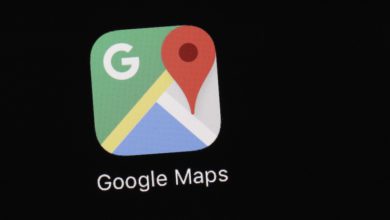
Editor’s note: With our coronavirus coverage, our goal is not to alarm you but to equip you with the information you need. We will try to keep things in context and focus on helping you make decisions. See a list of resources and frequently asked questions at the end of this story.
HAMILTON, Ohio - As a 77-year-old man who tested positive for COVID-19 was taking his last breaths this week, Butler County health care workers arranged so his family could be by his side.
“We thank the health care workers that made sure that happened. They provided full PPE for the families so that they could be with him at that time,” Butler County Health Commissioner Jennifer Bailer said Friday morning.
WCPO 9 got a close look at the battle on the front lines from Bailer and other Butler County officials - about what has happened so far and what lies ahead - and they gave us some good news to go with the bad.
The good: 15 people have recovered from COVID-19 in Butler County, Bailer said. Those 15 recovered in an average of 16 days. The range is 11 days to 24 days to full recovery.
The bad: “We're seeing evidence of widespread community spread of the virus throughout Butler County," said Bailer.
She said at least 49 people have tested positive for coronavirus in the county.
Nineteen have been hospitalized.
The number of people in the high-risk category is 13.
Four health care workers or first responders have tested positive.
“We know that there are more positive cases that aren’t reported to us, people who aren’t tested because there aren’t enough kits, and a variety of other reasons,” said Bailer.
The age range of patients is 1 to 86. The average age is 55.
Two people have died in Butler County.
The health district says it can take up to 12 days to get lab test results in Butler County. The median wait time is four days. Bailer said that number should be coming down as more and more places are able to run lab tests.
The county has taken up Bailer’s rallying cry:
“Stay the heck at home,” said Emergency Management Director Matt Haverkos.
More good news:
Haverkos said emergency management is helping the eight Butler County hospitals set up tents and obtain medical equipment and protective gear.
The eight hospitals include: Mercy Fairfield, UC West Chester, Ft. Hamilton Hospital, McCullough-Hyde Memorial, Liberty West Chester, Atrium Medical Center, TriHealth Bethesda Butler and Cincinnati Children’s Liberty Center.
"We continue to take on donations," said Haverkos.
More numbers:
The emergency operations center has distributed more than 27,990 N95 masks, 717 pairs of eye protection, over 6,200 gowns, 1,800 boxes of gloves and 1,000 thermometers.
More hope:
Dr. Keith Bricking, president at Atrium Medical Center, said more test kits and faster results may be on the way.
“That rapid testing is really going to be critical to us to be able to make health care decisions immediately and be able to isolate these patients,” Bricking said. “Fortunately, within the past 24 hours, Premier Health has been able to get a rapid test that we believe that we are going to be able to get same-day results on hospitalized patients.”
Dr. Marcus Romanello, chief medical officer at Ft. Hamilton Hospital, said Kettering Health Network is adding staff and hospital beds in preparation for a surge of patients.
No doctors or hospitals released a ventilator count Friday. However, Dr. Romanello said, "Should a massive surge occur, then ventilators become a challenge. And that is why it's so important to remain at home and help us flatten this curve so that we can manage this over a longer time period.
"Forty patients arriving in two days who need to go on a ventilator is much different than those same 40 patients arriving over the course of four weeks."
Bailer said one big group is still gathering at Solid Rock Church in Monroe.
“We are often asked many times a day why we have not shut them down,” said Bailer. “I can tell you that is because the governor gave churches an exception. We would prefer for them not to meet in such large numbers."
Find more coronavirus/COVID-19 hotlines and resources below:
Ohio
- Department of Health COVID-19 hotline: 833-4-ASK-ODH
- See ODH’s COVID-19 resources here.
Kentucky
- State COVID-19 hotline: 1-800-722-5725
- See the Cabinet for Health and Family Services coronavirus resource site here.
Indiana
- SDH Epidemiology Resource Center: (317) 233-7125 or (317) 233-1325 after hours, or e-mail [email protected]
- See more information for coronavirus in Indiana here.
What is coronavirus, COVID-19?
According to the World Health Organization, coronaviruses are "a large family of viruses that cause illness ranging from the common cold to more severe diseases such as Middle East Respiratory Syndrome (MERS-CoV) and Severe Acute Respiratory Syndrome (SARS-CoV).
A novel coronavirus, such as COVID-19, is a new strain that has not been previously identified in humans.
COVID-19 was first identified in December 2019 in Wuhan City, Hubei Province, China and has now been detected in 37 locations across the globe, including in the U.S., according to the CDC.
The CDC reports the initial patients in China have some link to a large seafood and live animal market, indicative of animal-to-person spread. A growing number of patients, however, did not report exposure to animal markets, indicating the disease is spreading person-to-person.
What are the symptoms? How does it spread?
Confirmed cases of COVID-19 have ranged from mild symptoms to severe illness and death, according to the CDC. Symptoms can include fever, cough, shortness of breath.
The CDC said symptoms could appear in as few as two days or as long as 14 days after exposure. It is similar to the incubation period for MERS.
Spread of the virus is thought to be mainly from person-to-person. Spread is between people who are in close contact with one another (within about six feet). Spread occurs via respiratory droplets produced when an infected person coughs or sneezes. The droplets can land in the mouths or noses of people who are nearby or possibly be inhaled into the lungs.
According to the CDC, it could be possible for a person to get COVID-19 by touching a surface or object that has the virus on it and then touching their own mouth, nose or possibly their eyes. This is not thought to be the main way the virus spreads, the CDC said.
The disease is most contagious when people are the sickest and showing the most symptoms.







